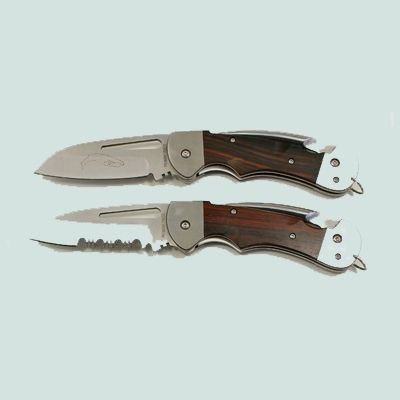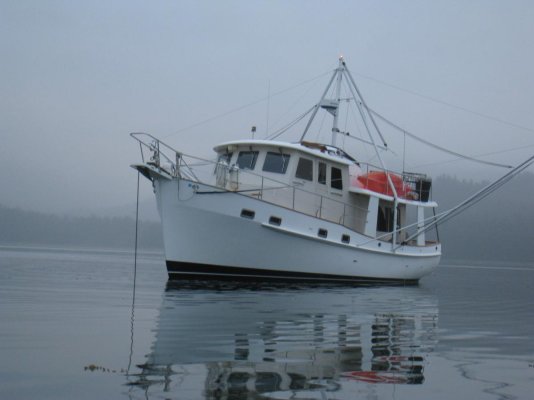I feel that all that considered I am going to go with a short piece of line connecting my all chain rode to my boat. That piece of line will be short enough that it will not get into my windlass should all my chain be out.
I will also be bringing a set of bolt cutters on board because if I ever get into a real emergency, it will probably be a heck of allot faster to get the bolt cutters than it will be to let all my chain out then cut the line free.
A few things to keep in mind ...
One, as Psneeld said, when you let chain run out on its own--- and you can do that with a Lofrans Tigres--- it goes out amazingly fast. I would guess within seconds because it's going to be accelerating as it goes. Like many of us probably, I've seen it happen accidentally on a boat in its slip on our dock and the chain--- a couple hundreed feet I'm sure--- was gone almost instantly. Big roar and then dead silence.
Two, you have the same windlass we do. The line connecting the bitter end of your anchor chain to the shackle, eye bolt, etc. in the anchor locker will not hurt anything if it runs through or over your wildcat. The important thing is that it will appear on deck next to you where you can easily cut it with a rigging knife.
Three, I've cut chain with a bolt cutter I bought in Hawaii for my Land Rover. Chain about the same size as our anchor chain (and larger). The thing is some four feet long and has compond leverage. I'm sure a lot of people here are familiar with or have this type of cutter.
It's not like cutting a piece of paper. Even with the long handles and compound leverage, it takes a fair amount of bearing-down force and a biit of time to finally cut through a link. That's standing on the ground. Envision yourself doing this on the bow of a boat that's heaving up and down in the waves in the dark (because these situations never arise when it's light).
You've got to get the cutter jaws on a link and keep them there no matter how much you're being thrown around. As opposed to cutting a line with a rigging knife when all you have to do is contact the line with the blade.
Given the choice of being tossed around up on the bow with a big, long, heavy set of bolt cutters in both hands or a little, lightweight rigging knife in one hand, it seems to me the knife is the safer bet. With your experience, I'm sure you'vfe heard the old addage, "One hand for the boat, one hand for you," a million times.
Bolt cutters with sufficient power to cut through an anchor chain are by definition pretty big and heavy and awkward and clunky. Which means they have to be stowed somewhere, preferably out of the way. Which means when you need it you have to go get it. A rigging knife, on the other hand, can be kept right next to the cabin door or on your person if you desire-- my wife always wears hers whenever we have to back away from a dock using a bow line around a cleat to hold the bow in place. So when you need it, it's right there.
Finally, if I'm going to cut something that might be under tension, while the risk of injury is always present, I'd rather be whacked in the head with the end of a nylon or dacron line than the end of a chain.
Just some things to think about perhaps.......



